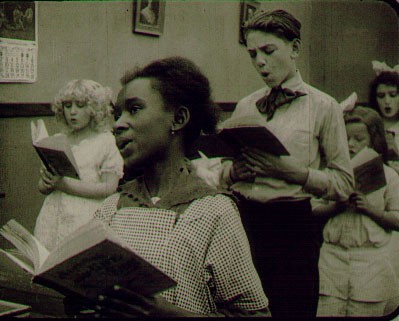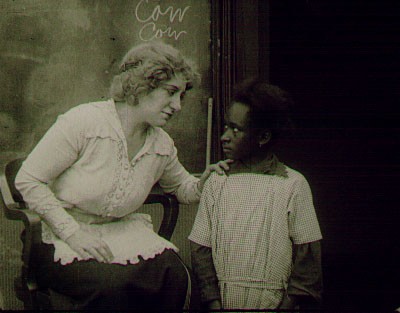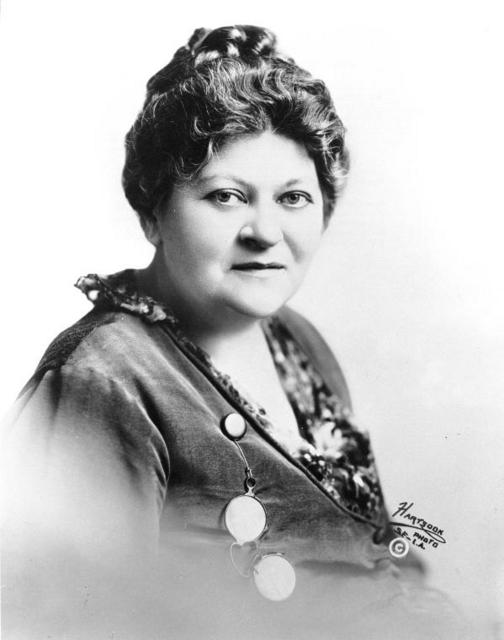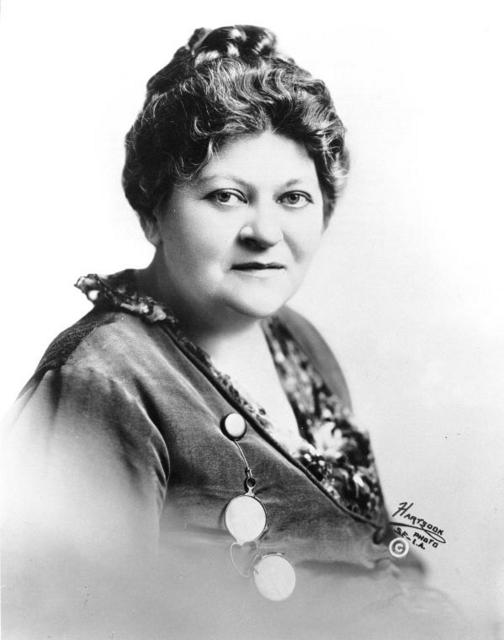We do not as yet have documentation on the “Hollywood Girls’ Club” or “the first all-woman film company” that Lule Warrenton was reputed to have started in 1923 (Slide 1996, 48). These would not have been her first efforts to get outside the niche she had occupied since she began at Universal in 1913. Dubbed “Mother” Warrenton, as a character actor she specialized in maternal roles. The first reference to Lule Warrenton as a director can be found in a 1916 article in the Moving Picture Weekly featuring the formation of her company within Universal Studios, formed to produce a picture then titled The Calling of Lindy. The following year, Moving Picture World announced that with the production of The Birds’ Christmas Carol, Warrenton would be “the first and only woman producer with a studio and company all her own” (1030). We now have a historical vantage on such hyperbole, however, and wonder how many times publicity from this period used the novelty of a woman producer or director to promote a picture.

Frame enlargement, When Little Lindy Sang (1916), directed by Lule Warrenton. Courtesy of the Library of Congress.

Frame enlargement, When Little Lindy Sang (1916), directed by Lule Warrenton. Courtesy of the Library of Congress.
It is, of course, difficult to construct an account of Warrenton’s career from trade journal articles that were most likely based on press releases, notorious for their inflated rhetoric and unfettered optimism. However, the extant print of the Universal one-reel When Little Lindy Sang (1916), directed and produced by Warrenton, from a scenario by Olga Printzlau, tells us much more about the kind of subject matter that women tended to take up, even with the limited independence of the short-term company under the studio umbrella. At Universal, Warrenton was given the authority to develop a series of shorts for the children’s audience. Most importantly, the film stands out in its subtle treatment of racial prejudice, and would seem to be a social issue as much as an entertainment film. Lindy, played by a talented African-American child actress (Ernestine Jones) represents the one black child who is rejected by the students in the all-white class—excluded not for her color but for her loud voice. Their prejudice is turned around when Lindy saves the others by calling out “Fire” in her booming voice. The teacher then saves Lindy, who is left in the smoking building. As an example of work in the silent era, When Little Lindy Sang is a visual gem that makes an interesting comparison with an earlier treatment of black social subject matter, Alice Guy Blaché’s highly theatrical A Fool and His Money (1912), in contrast with which it has a very documentary-like feel. Even the scene in which a white student tries to wash the black off Lindy’s face in the water fountain is as much social comment as comedy.
There is no evidence as yet that Warrenton made any more films in this series, and this could explain her move the next year to the Lankershim, California, studio of what was called the Frieder Film Corporation, where she worked on a children’s film series on her own. Working as an independent, Warrenton had a larger role as well as a stake, not only producing and directing, but also adapting the classic The Birds’ Christmas Carol, which was released under the name A Bit O’ Heaven (1917). Her second venture was significantly larger in every way, this time a feature, and Moving Picture World credits her with a company of fifty people, but then deflates this with the clarification that most in the company are children (by implication, not professional adult actors). Another Frieder Film Corporation feature is described in the trade press as “an unusually high-class production filled with charming originality” (115). Still, the next two films were announced but apparently never made, and by September 1917, eight months after the announcement of her first independent film, Warrenton returned to character acting at Universal.
Some of Lule Warrenton’s work as an actress can be seen in the extant Eleanor’s Catch (1916), a short directed at Universal by Cleo Madison, where Warrenton plays the mother of Eleanor, in a bold reversal-of-expectations comedy where Eleanor (Madison) is the undercover cop who “catches” the underworld figure she lures into her “net.” An unusual situation where the women are shown to be in league against the men, Warrenton is shown here to be full-figured, but is not inclined to use her weight for comedy in the mode of popular slapstick. She appeared as well in features directed by Madison, A Soul Enslaved (1916) and Her Bitter Cup (1916), both melodramas with Madison cast in the role of a radical factory worker. [See the scenario for Her Bitter Cup.] Warrenton can also be located on the credits for Lois Weber ’s Jewel (1915) and Anthony Slide suggests that Weber, as the most powerful female director at Universal, would have been influential in Warrenton’s career, along with those who also directed at Universal during the 1911–1919 high-water mark for women at that studio (1996, 38).

Lule Warrenton portrait. Courtesy of the Academy of Motion Picture Arts and Sciences, Margaret Herrick Library.
The most detailed source of information from the period on Lule Warrenton, appearing in the Moving Picture Weekly, confirms a pattern that one sees in more than one example with women film pioneers. Coming to motion pictures from a longer career in the theatre, where she both managed stars and owned her own company, Warrenton’s inclination was to try to achieve the same position within the new industry. Her age as much as her experience is the topic of this article, which lists her as fifty-two. Anthony Slide gives her years as June 22, 1892, to May 14, 1932, which, if this is correct, would have made her forty-six in 1916, not fifty-two (1996, 48). Whether she was fifty-two or fifty-eight when she left Universal in 1922, she would have been several decades beyond most actress-directors who “retired” around the same time. Warrenton could be compared here with Marie Dressler who, because of the maturity of the type she played as a character actor, was able to significantly extend the length of her career. More work needs to be done investigating Warrenton as the founder of the “Hollywood Girls’ Club”as well as on her 1923 attempt to start a “women’s company,” significantly, not in Hollywood but in San Diego.

